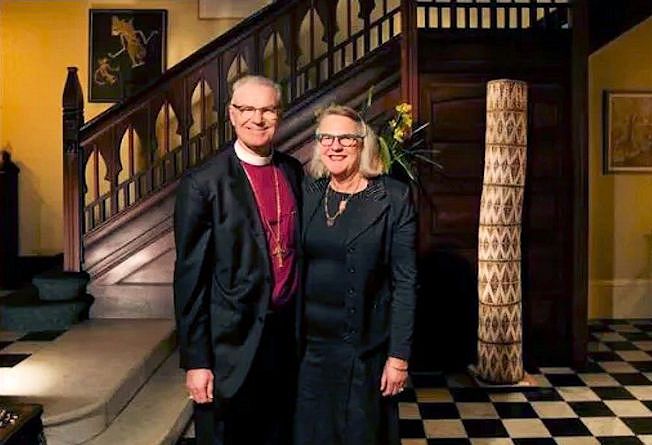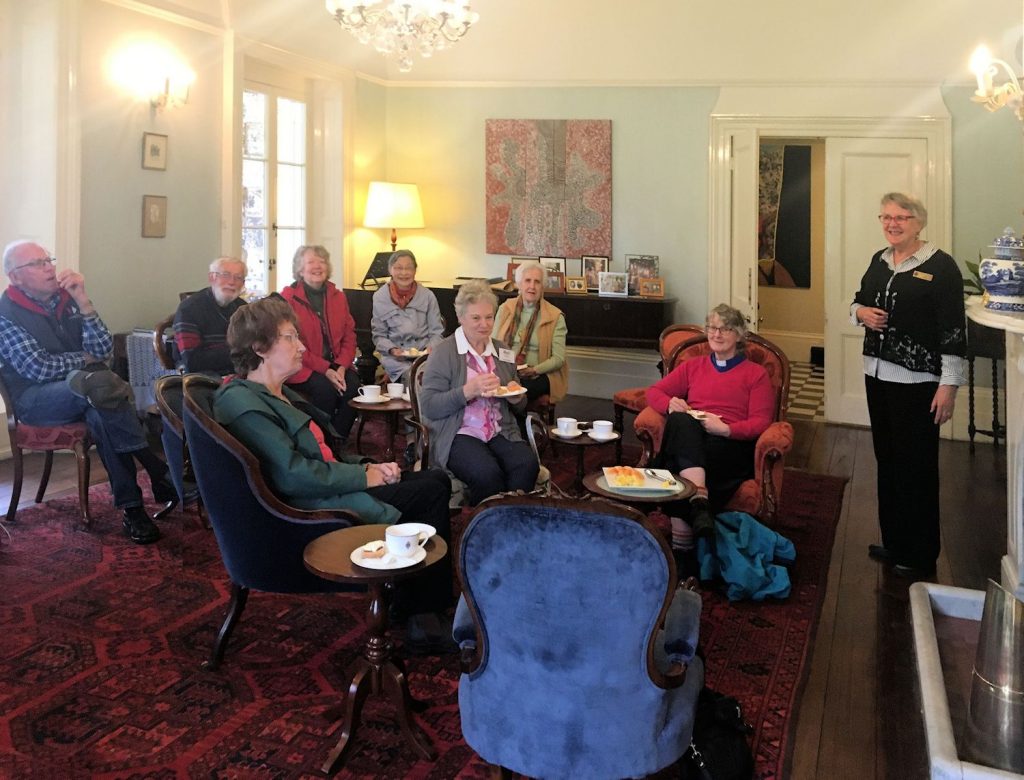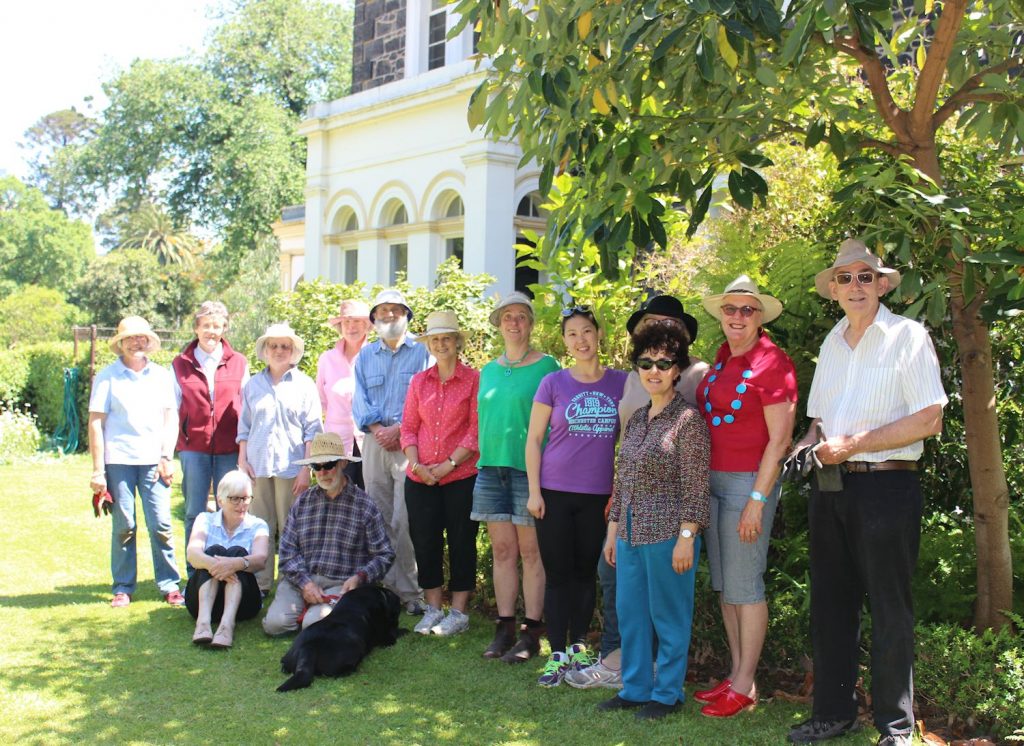When Bishop Charles Perry built Bishopscourt, he said it would be as a ‘city on a hill’ for the people and community of Melbourne. Various Archbishops over time have continued to fulfill this vision in their own way and within all the challenges they faced. Since the beginning of the 21st Century engagement with the wider church and community has expanded as resources and vision for the public outreach and ministry of Bishopscourt has changed.
In earlier times Bishops and Archbishops occupied the entirety of Bishopscourt as a family home. With the building of the new wing in 1904, accommodation was available for a second Bishop. Now the Archbishop is accommodated in an apartment upstairs and the ground floor rooms are use as community spaces.
Extra bedrooms provide for the visit of significant guests such as the Archbishop of Canterbury Justin Welby and his wife Caroline who visited in 2022. His visit celebrated the 175th Anniversary of St. Paul’s Cathedral and included meetings with a range of multicultural congregations including the Karen from Myanmar, Sudanese and Arabic speaking communities reflecting the changing nature of Australian society as well as the Anglican Church.
The Archbishop hosts regular meetings for a range of leaders of Anglican organisations such as Anglicare, Anglican Overseas Aid and Benetas amongst others. Heads of Anglican schools are regular visitors. Bishopscourt could be said to be a unifying symbol of the Anglican character which shapes these significant agencies and their contribution to the wider community. These regular cross sectoral meetings provide important networking opportunities and reinforce their Anglican roots and character. Today these organisations and schools intersect with government policy and funding and maintaining Anglican values is important.
St. John’s chapel, centrally located inside Bishopscourt signifies the unbroken centuries of prayer and support for the pastoral ministry of the Archbishop to these and other clergy and church leaders.
Hosting clergy and new ordinands introduces Bishopscourt and its role in the history of the Diocese and through the clergy links it to members of their parishes.
Some special ministry clergy such as chaplains hold retreats using the Chapel and gardens for reflection and renewal.
Bishopscourt has welcomed many groups to enjoy organised tours of the public rooms in the house. Groups of 25 from many churches, organisations and community groups have enjoyed a welcoming morning tea of scones, jam and cream prepared by volunteers and then are conducted through each room. The Drawing Room, Morning Room, St. John’s Chapel and Dining Room each have a story of their early development and progressive restoration over the decades. Each tour is conducted by local historians or former residents of the House. The house has historic furniture and items that have been contributed by each Bishop and Archbishop. This is followed by a tour of the historic garden which is maintained by a large group of volunteer gardeners. The team of over 20 gardeners are led by a volunteer head gardener and meet on the third Wednesday of each month. Volunteers include historic tree specialists and others who focus on maintaining the vegetable garden and orchard with examples of plants that would have been in the garden from its beginning. Funds raised from the small charge made for each tour member contributes to the maintenance of the garden and arborists who care for the historic trees.
A large team of volunteers support the ministry of Bishopscourt through maintaining the beautiful garden, supporting major events such as the Open House and Open House weekends and the regular tours of Bishopscourt. They also provide support for other events such as book launches, fundraising and community events.
The visibility of the historic house set amongst beautiful gardens has been an opportunity to invite the East Melbourne and wider community to visit.
Bishopscourt has featured several times in Melbourne’s Open House Scheme attracting hundreds of visitors over a weekend to hear about the history and ministry of those who have lived in the house over time and contributed to the development of health, welfare and education services which carry on today.
The local East Melbourne History society takes a special interest in the House while Christmas Carols and other local celebrations include a wide range of community visitors. Most recently a Children’s Christmas Party involving the local fire station was a happy event.
On a more serious note Police Legacy held a significant event recognising the sacrifice of officers in the line of duty. It was attended by the most senior police leaders and officers and was an unusual opportunity for the Archbishop to also reflect on the contribution of Police Chaplains who play an important role in this community.
As far back as Frances Perry, the wife of Bishop Charles Perry, there has been a strong focus on support for the wellbeing of women. Mrs. Perry had concerns for women prisoners and pregnant women who had no support. She was instrumental in developing the ‘lying -in hospital’ which eventually evolved into the Royal Women’s Hospital and now bears her name on Frances Perry House.
In modern times concern for refugee and migrant women has been a focus of fundraising over the past ten years. Dream Stitches, a program which seeks to support and create opportunities for refugee and migrant women to be independent reflects this support for newly arrived women in Australia and is a particular interest of Joy Freier, the wife of the current Archbishop. Joy has hosted garden parties and fashion parades featuring women wearing their own garments and enjoying sharing their new skills and confidence.
The Melbourne Anglican Trust Corporation (MATC) appoints a volunteer management committee which consists of two MATC Trustees and not less than three other suitably qualified persons to oversee the affairs of Bishopscourt.
The committee is responsible for ensuring maintenance and improvement of the grounds and buildings comprising Bishopscourt, fundraising, compliance obligations with all applicable laws and the general use of the property as a designated home for the Archbishop.
The management committee also has responsibility for funds raised by the Friends of Bishopscourt and to ensure volunteers who generously given of their time and expertise are acknowledged and are able to conduct their tasks in a safe environment.






Hundreds of people now visit Bishopscourt every year. It is a gateway to the Diocese for the range of State, Diocesan, individuals and organisations who visit. It continues to fulfil Charles Perry’s vision of a home through which hospitality and leadership to the church and city could thrive.
